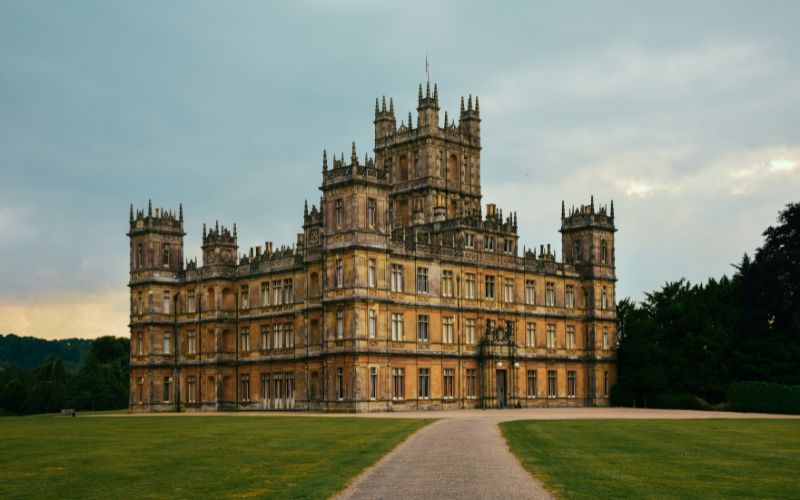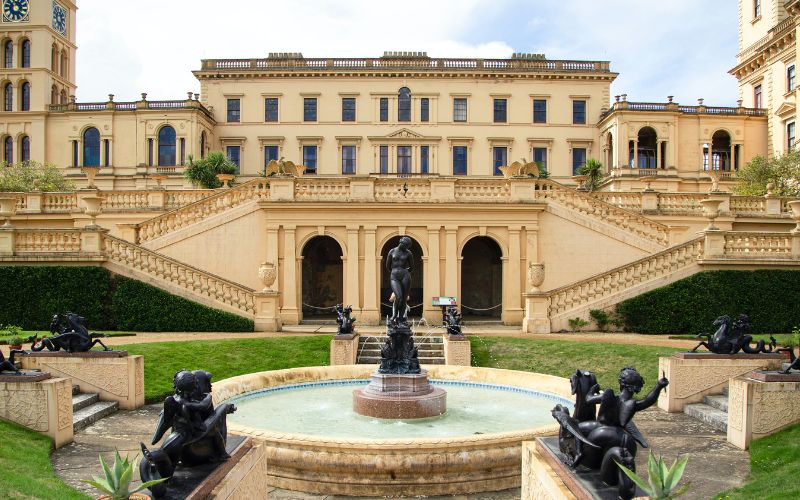Our last instalment of Buildings and their royal pasts reflects on three final properties steeped in history.
Salisbury Cathedral, Wiltshire, constructed in 1220
The original Salisbury Cathedral was developed on an iron age hillfort (known as Old Sarum today) alongside a medieval castle, following the success of the Norman conquest headed up by (king) William the Conqueror in 1066.
Better known as the birthplace of the Magna Carta, one of the most important surviving documents in British history, it was drawn up by King John I amidst growing civil war fears in 1215 and taken to the cathedral for safe keeping.
King John I was an increasingly unpopular king. Having lost wars and raised taxes tremendously high, his Barons were ready to overthrow his rule until the creation of the Magna Carta – which would hold monarchs accountable for unlawful actions, meaning that no royal was – or could ever be – above the law.
A couple of years later in 1217, however, a new cathedral was commissioned by Pope Honorius III. Construction began in 1220 with both skilled and unskilled workers contributing to the development of the new build. The Magna Carta was then moved to the cathedral’s new site in 1258 when the new build was complete.
The cathedral remained largely untouched until royally associated architect, Sir Christopher Wren, undertook an architectural survey on the cathedral’s spire where he determined that it was slanted by about 30 inches. His alterations have been left in place to this day.
The only other noticeable alteration came in the late 18th century when architect James Wyatt remodelled part of the cathedral, removing the bell tower altogether.
Luckily, the cathedral survived throughout the centuries, avoiding demolition at the hands of Christian divide during Tudor rule to air raids of the second world war. King Charles and Queen Camilla last visited in 2020, celebrating the 800th anniversary of Salisbury Cathedral.

Image: bdonline.co.uk
Windsor Castle, Berkshire, constructed in 1070
The famed favourite local residence of Queen Elizabeth II, Windsor Castle sits just outside of London in the county of Berkshire. Overlooking 13 acres of land, the castle can be seen for miles and is comprised of two quadrilateral-shaped complexes, separated by the infamous round tower.
A Saxon castle once stood on the site of the present property, but it was William the Conqueror (again) that developed the foundations for the present Windsor Castle.
Many monarchs have moulded the building over the years including Henry II, who was the first to build upon and remodel William’s design, constructing the Round Tower in place of the mound and stockade that stood before.
The next significant upgrade works came from Henry of Winchester, aka King Henry III, who began developing St George’s Chapel and finished the construction of the south wall and the western end of the lower ward.
St George’s Chapel, completed in 1528 and restored between 1921 and 1930, is another example of early English perpendicular gothic-style architecture. The chapel is located next to the Albert Memorial Chapel along the lower ward.
Henry VII was the monarch that finished developing the Albert Memorial Chapel, known as 'Wolsey's Chapel' at the time. It was restored by Queen Victoria in the 19th century and renamed after her husband, Prince Albert, following his death. This chapel is the burial site of George III, George IV, and William IV.
The fortress buildings were converted into residential apartments for the royals under Edward III in 1348. The apartments were rebuilt by Charles II in the 17th century, and reconstructed once more by George IV to include residential quarters for both the royals and state visitors.
To this day, the residential apartments are still used in the upper ward, as intended by George IV’s design, and displays original artwork from the likes of Raphael, Michelangelo, and Leonardo da Vinci.
However, in 1992, a fire devastated the northeast corner of the upper ward destroying more than 100 rooms. Luckily, some original paintings and valuables were retrievable, and the affected area was fully restored in 1997.
The late Queen spent many of her final years at Windsor Castle and was even quarantined there during the pandemic. The castle attracts more than 1.5 million visitors each year and is the final resting place for a number of monarchs including Henry VIII, Charles I, Queen Elizabeth II and the Mountbatten-Windsor family.

Image: Royal Collection trust
Westminster Abbey, London, constructed in 960
In the heart of London sits the pinnacle of tourist attractions, with a history spanning more than 1,000 years, and the final resting place of many famed brits – from monarchs to literary legends.
The site of Westminster Abbey was originally the location of a Benedictine monastery, commissioned around 960AD by King Edgar and St Dunstan. Then, in the 1040’s, (king) Edward the Confessor decided to enlarge the monastery and add a new stone church in honour of St Peter.
The church was called West-Minster, distinguishing itself from another church in East Minster (St Paul’s Cathedral), and was completed in 1065.
William the Conqueror became the first king of England to be coronated here in 1066, starting centuries of tradition, but Edward’s church design was short lived, with the only surviving structural features now seen on the arches of the undercroft.
When Henry III came into power, he decided to rebuild on the site. Incorporating gothic-style architecture, the Abbey was designed to be a grand beacon for worshippers. It was also commissioned with the intention of making Westminster Abbey the site of coronations and a resting place for future monarchs.
Edward’s church was finally demolished in 1269, however, Henry III died before the nave could be incorporated into the new build, leaving the older structure attached to his gothic-style Abbey for many years.
Henry VII was the next to make alterations to the Abbey, commissioning the construction of the stunning Lady Chapel. The chapel’s ceiling has an intrinsic fan-vaulted roof, designed by Italian architect and sculptor Pietro Torrigiano, with the stained glass windows added in the 20th century.
The development of the Abbey's western towers was finally complete in 1745, having sat abandoned and half-built for centuries. The finishing touches were designed by architect Nicholas Hawksmoor, however, very little is left of the original stained-glass windows of the medieval times, with most of the stained-glass windows now from the 18th and 19th centuries.
Hundreds of years of construction and design were put in jeopardy in the 20th century when London was heavily bombed during the second World War.
Luckily, the city was prepared for such an attack and sent treasured items to various locations around the countryside. The Abbey was boarded up and cushioned by sandbags, yet it would still fall victim to the heavy shelling and suffer severe structural damage in 1941.
Bombs tore through the roof and set fire to the Abbey; however, these were quickly put out by volunteers and fire watchers who were able to limit the fire damage. The roof was the most damaged, rebuilt following the end of the second world war. The majority of the Abbey’s restoration works took place between 1995 and 1998.
St Edward the Confessor, Queen Elizabeth I, Charles Dickens, and Stephen Hawking are just some of history’s icons that are buried at the Abbey, recently hosting the funeral of the late Queen Elizabeth II.
Westminster Abbey has firmly cemented itself in global history and is one of the most iconic buildings of a bygone era, with a reinforced relevance through royal weddings, funerals, and coronations.

Image: Historic UK
Curious about the properties we’ve worked on? Browse our case studies here. If you’ve gotten this far, why not check out part 1 and part 2?
How can we help?
Our team of Chartered Building Surveyors are working closely with property owners, lenders, and estate agents across London and the South Coast to proactively navigate a changing horizon. From ensuring new builds and conversions are delivered on time and in budget, to delivering EPC and MEES upgrades on behalf of landlords.
Read more about our solutions here:
Technical due diligence
Project management
Dilapidations consulting
Cost management
Monitoring Surveying
Party Wall
Contract Administration
Planned Preventative Maintenance
Alternatively, email us at enquiries@sillencehurn.co.uk or call our Southampton team on 02380 014786 or London at 020 3143 2128





